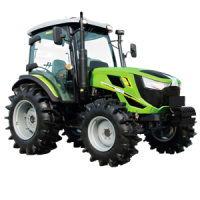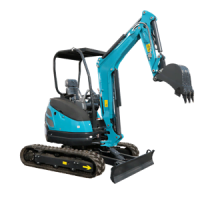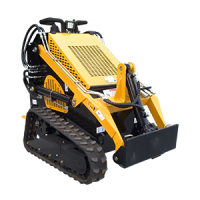Welcome to My Blog!
Before we dive into the content, I’d love for you to join me on my social media platforms where I share more insights, engage with the community, and post updates. Here’s how you can connect with me:
Facebook: https://www.facebook.com/profile.php?id=100072217509763
LinkedIn: https://www.linkedin.com/company/74949059/admin/dashboard/
YouTube:https://www.youtube.com/@tractormanufacturer-lc5qz
TikTok: https://www.tiktok.com/@tractormanufacturer
Now, let’s get started on our journey together. I hope you find the content here insightful, engaging, and valuable.
Introduction
The Tractor PTO (Power Take-Off) is an indispensable feature of modern tractors, enabling the transfer of mechanical power from the tractor’s engine to a diverse range of implements and attachments. This ingenious mechanism has transformed agricultural practices and various other industries by empowering tractors to power everything from mowers and balers to tillers, harvesters, and pumps. At Qilu, a leading global tractor manufacturer, we recognize the critical role of a robust and efficient PTO system. This comprehensive guide delves into the intricacies of Tractor PTOs, exploring their types, operational principles, safety protocols, maintenance best practices, and the advantages of Qilu’s advanced PTO technology, ultimately showcasing the superior engineering and reliability of Qilu tractors.
What is a Tractor PTO?

A Tractor PTO is a rotating shaft, typically located at the rear (and sometimes also at the front or mid-mount) of a tractor, designed to transmit mechanical power from the tractor’s engine to implements and attachments. Think of it as a mechanical power outlet, allowing the tractor to power external machinery. When engaged, the PTO shaft rotates at a standardized speed, providing the necessary torque and power to operate a wide variety of equipment.
Types of Tractor PTOs: Understanding the Variations
Several distinct types of Tractor PTOs cater to different operational needs:
- Transmission PTO (Dependent PTO): This traditional type is directly linked to the tractor’s transmission. Consequently, the PTO speed is directly proportional to the tractor’s ground speed and gear selection. This type is generally simpler in design but less versatile for implements requiring a constant power input regardless of ground speed.
- Independent PTO: This more modern design operates independently of the transmission, allowing the PTO to maintain a consistent speed regardless of the tractor’s ground speed or whether the tractor is moving or stationary. This is crucial for implements like balers, harvesters, and sprayers that demand a constant power source.
- Live PTO: A refined version of the independent PTO, the live PTO continues to operate even when the tractor’s clutch is disengaged (e.g., during gear changes or brief stops). This feature is invaluable for implements that need continuous operation, such as forage harvesters or mowers.
- Engine PTO: Directly driven by the engine, offering constant speed independent of transmission and clutch operation. Common in newer tractors.
- Ground Speed PTO: Where the PTO speed is proportional to the ground speed of the tractor. Used for specific applications such as manure spreaders.
- Standard PTO Speeds (540 and 1000 RPM): These are the most common industry standards. The 540 RPM PTO is typically used for lighter implements, while the 1000 RPM PTO provides higher power for more demanding tasks. Some tractors offer both options, often with different sized PTO shafts.
How a Tractor PTO Works: The Mechanics of Power Transfer
The PTO system is powered by the tractor’s engine, typically through a series of gears, shafts, and clutches. The power flow is as follows:
- Engine Power: The engine generates rotational power.
- Power Transfer: The engine’s rotational power is transferred through the transmission to the PTO drive mechanism.
- PTO Engagement: The operator engages the PTO, activating a clutch (mechanical, hydraulic, or electric) that connects the engine power to the PTO shaft.
- Power Output: The PTO shaft rotates at the designated speed (540 or 1000 RPM).
- Implement Connection: A driveline (also known as a PTO shaft or PTO driveshaft) connects the tractor’s PTO shaft to the implement’s input shaft.
- Implement Operation: The rotating driveline transfers power to the implement, enabling it to perform its intended function.
Key Components of a Tractor PTO System: A Closer Look
- PTO Shaft: The rotating output shaft, typically with a splined end for connecting to the driveline.
- PTO Shield (Guard): A critical safety component that covers the rotating PTO shaft to prevent accidental contact.
- Driveline (PTO Driveshaft): A telescopic shaft with universal joints at each end, allowing for movement between the tractor and the implement.
- Overrunning Clutch (ORC or One-Way Clutch): Prevents the implement from driving the tractor when its momentum exceeds the tractor’s engine speed. This is a vital safety feature, especially when operating heavy rotary implements.
- Slip Clutch (Torque Limiter): Protects the PTO system and implement from overload by slipping when excessive torque is applied, preventing damage to gears, shafts, and other components.
Safety Precautions When Using a Tractor PTO: Prioritizing Operator Safety


PTOs, while highly useful, are powerful and potentially dangerous if operated improperly. Adhering to these safety precautions is paramount:
- Pre-Operation Checks: Before operating the PTO, ensure all shields and guards are securely in place and in good condition. Inspect the driveline for wear, damage, and proper lubrication.
- Clothing and Personal Protective Equipment (PPE): Wear close-fitting clothing and avoid loose garments that could become entangled in the rotating shaft. Use appropriate PPE, including safety glasses and gloves.
- Disengagement Before Dismounting: Always disengage the PTO and turn off the tractor engine before dismounting or performing any maintenance on the implement.
- Never Step Over a Rotating PTO Shaft: This is extremely dangerous and can lead to serious injury or death.
- Be Mindful of Turning Radius: Be aware of the implement’s turning radius and ensure adequate clearance to avoid striking obstacles.
- Regular Inspections and Maintenance: Regularly inspect the PTO system for wear, damage, and proper lubrication. Replace worn or damaged components immediately.
Comparison of Different PTO Types: Choosing the Right Option
| Feature | Transmission PTO (Dependent) | Independent PTO | Live PTO | Engine PTO | Ground Speed PTO |
|---|---|---|---|---|---|
| Speed Dependence | Ground speed and gear selection | Engine speed | Engine speed | Engine speed | Ground speed |
| Clutch Control | Tractor transmission clutch | Separate PTO clutch | Separate PTO clutch | Separate PTO clutch | Dependent on transmission/ground speed |
| Continuous Operation | No, stops with clutch disengagement | Yes | Yes, even with clutch disengaged | Yes | No, stops when tractor stops |
| Complexity | Simpler | More complex | More complex | More complex | More complex |
| Cost | Lower | Higher | Higher | Higher | Higher |
| Applications | Lighter implements, simpler tasks | Heavier implements, consistent power needs | Operations requiring continuous power during stops | Constant speed independent of all other systems | Specific applications like manure spreading |
Maintenance of Tractor PTO Systems: Ensuring Longevity
Regular maintenance is crucial for maximizing the lifespan and reliability of your tractor’s PTO system:
- Lubrication: Regularly lubricate the PTO shaft, driveline, and implement connections according to the manufacturer’s recommendations. Use the correct type of lubricant.
- Inspection: Conduct regular visual inspections of all components, checking for wear, damage, cracks, and proper alignment. Pay close attention to the driveline’s universal joints and telescoping sections.
- Shield Maintenance: Ensure PTO shields and guards are in excellent condition and securely fastened. Replace any damaged or missing shields immediately.
- Clutch Adjustment: Periodically check and adjust the PTO clutch according to the manufacturer’s specifications. A properly adjusted clutch ensures smooth engagement and prevents excessive wear.
- Storage: When not in use, store the driveline properly to prevent damage and corrosion.
Qilu Tractors: Engineered for Performance, Reliability, and Safety

At Qilu, we prioritize the performance, reliability, and safety of our tractors. Our PTO systems are meticulously engineered and rigorously tested to ensure optimal power transfer, durability, and operator safety.
Key Features of Qilu Tractor PTO Systems:
- Robust Construction: Built with high-strength materials and precision engineering for long-lasting performance.
- Efficient Power Transfer: Optimized design minimizes power loss and maximizes efficiency in transferring power to implements.
- Advanced Clutch Systems: Smooth and reliable PTO engagement with minimal wear and tear.
- Comprehensive Safety Features: Equipped with all necessary safety shields, guards, and interlocks to protect operators.
- Ease of Maintenance: Designed for easy access and simplified maintenance procedures.
- Variety of PTO Options: Qilu offers various PTO options (e.g., independent, live, 540/1000 RPM) to suit diverse implement requirements.
Conclusion
The Tractor PTO is a pivotal component that significantly expands the versatility and functionality of modern tractors. By understanding the different types of PTOs, their operational principles, safety precautions, and maintenance requirements, you can maximize the performance and lifespan of your tractor and implements. Qilu tractors, with their robust and efficient PTO systems, are designed to provide the power, reliability, and safety you need to tackle any task.
FAQ
What does PTO stand for?
PTO stands for Power Take-Off.
What is the purpose of a PTO shield?
The PTO shield is a safety device that prevents accidental contact with the rotating PTO shaft.
What is the difference between a 540 RPM and a 1000 RPM PTO?
These numbers refer to the rotational speed of the PTO shaft in revolutions per minute. 1000 RPM PTOs provide more power for demanding implements.
Why is it important to use an overrunning clutch (ORC)?
An ORC prevents the implement from driving the tractor, which can cause damage to the PTO system or even cause the tractor to overturn.





-1.png)